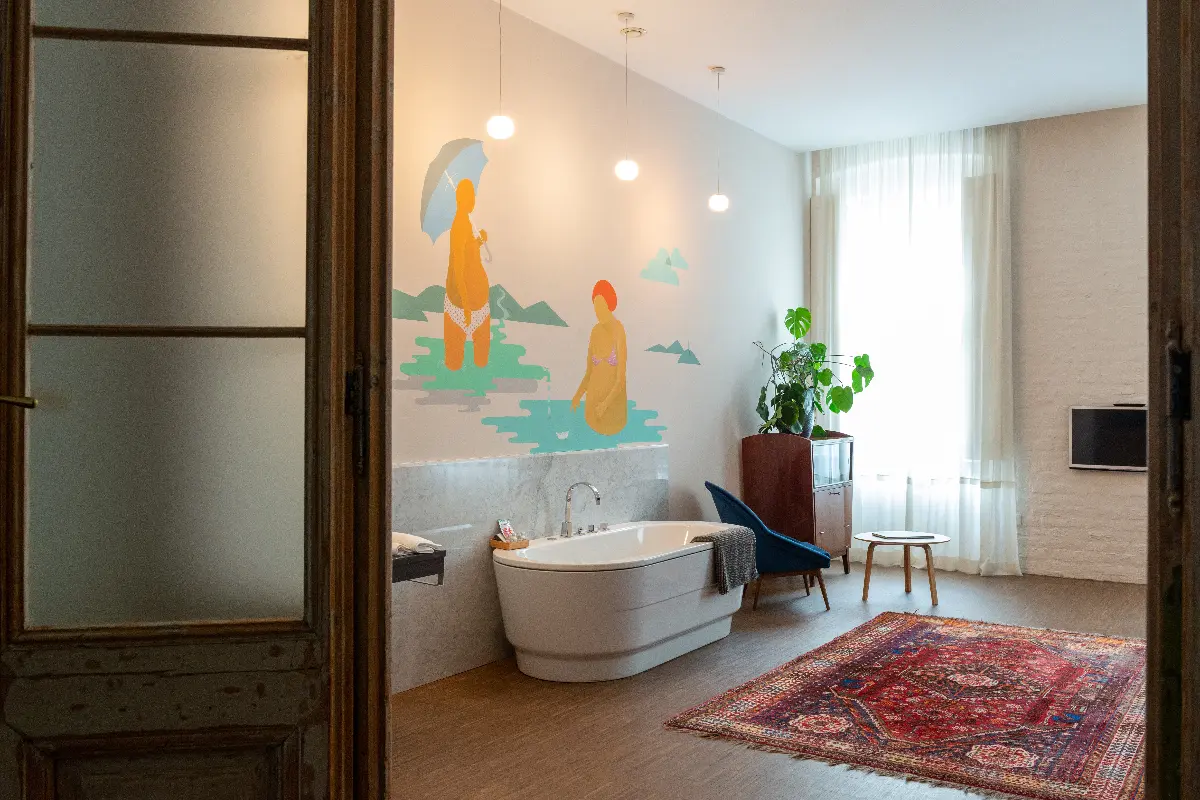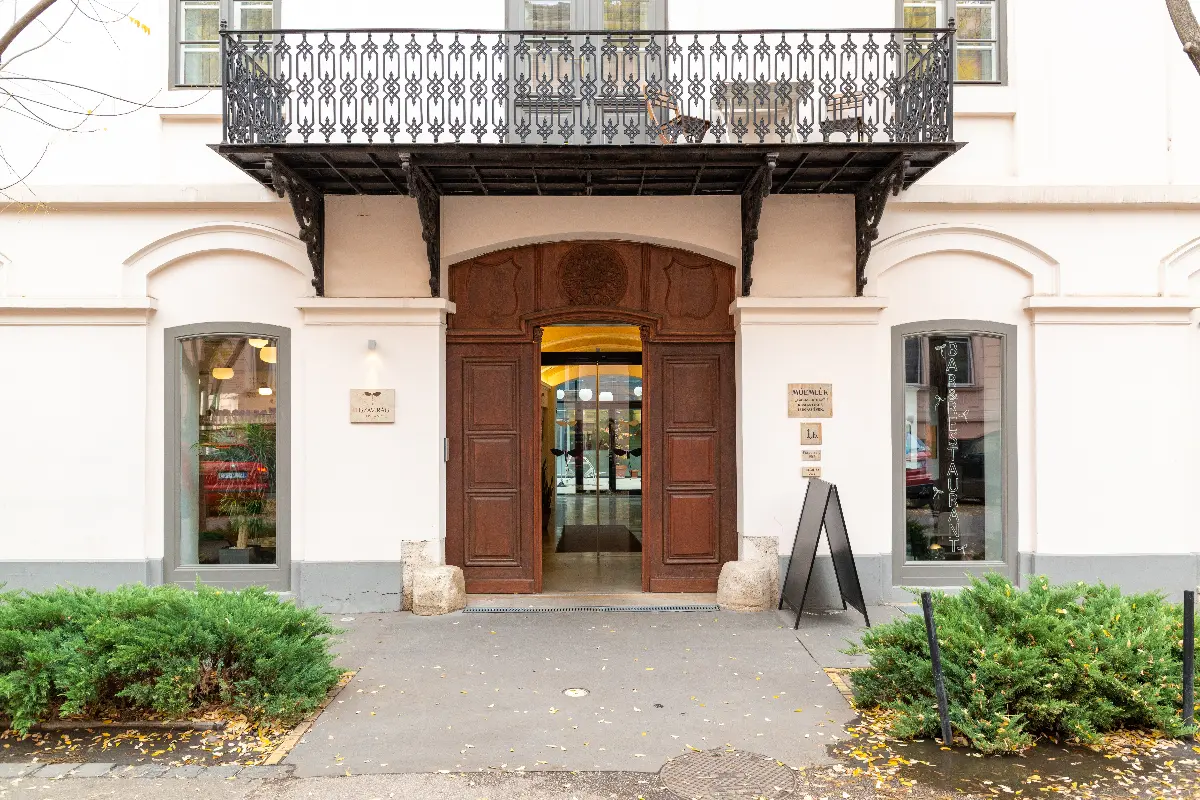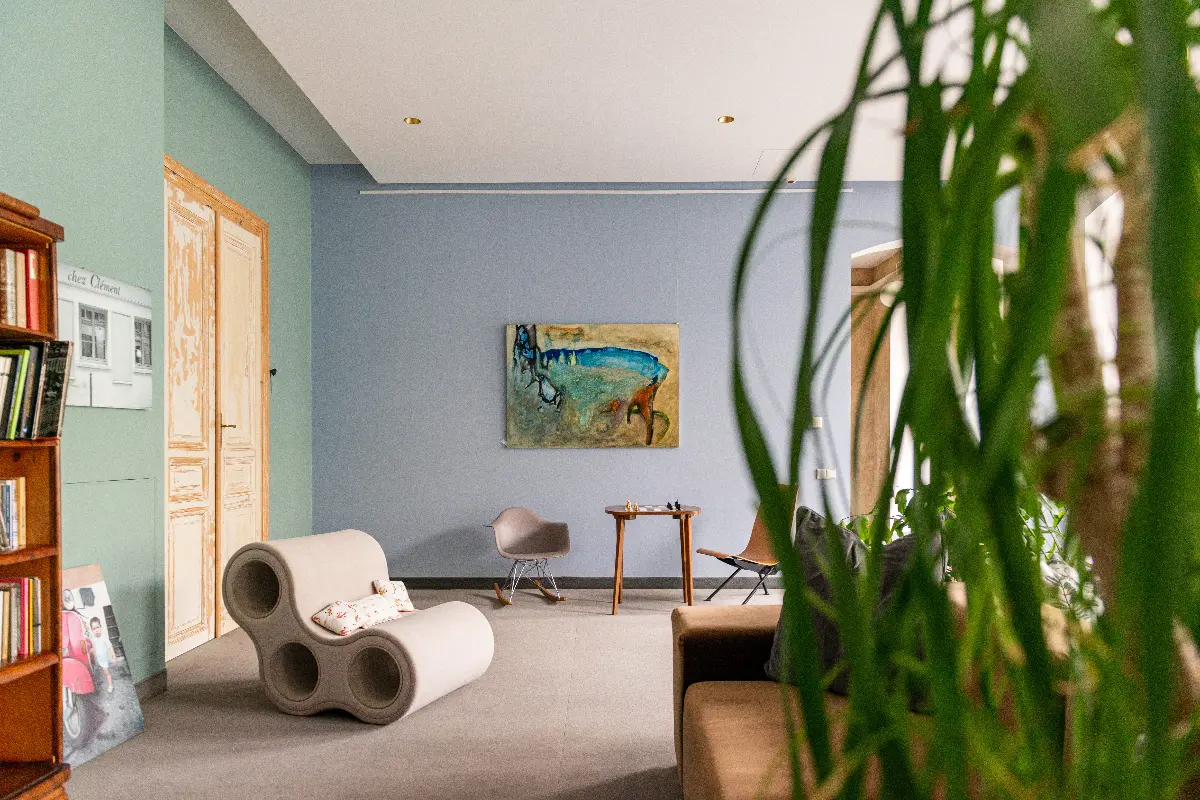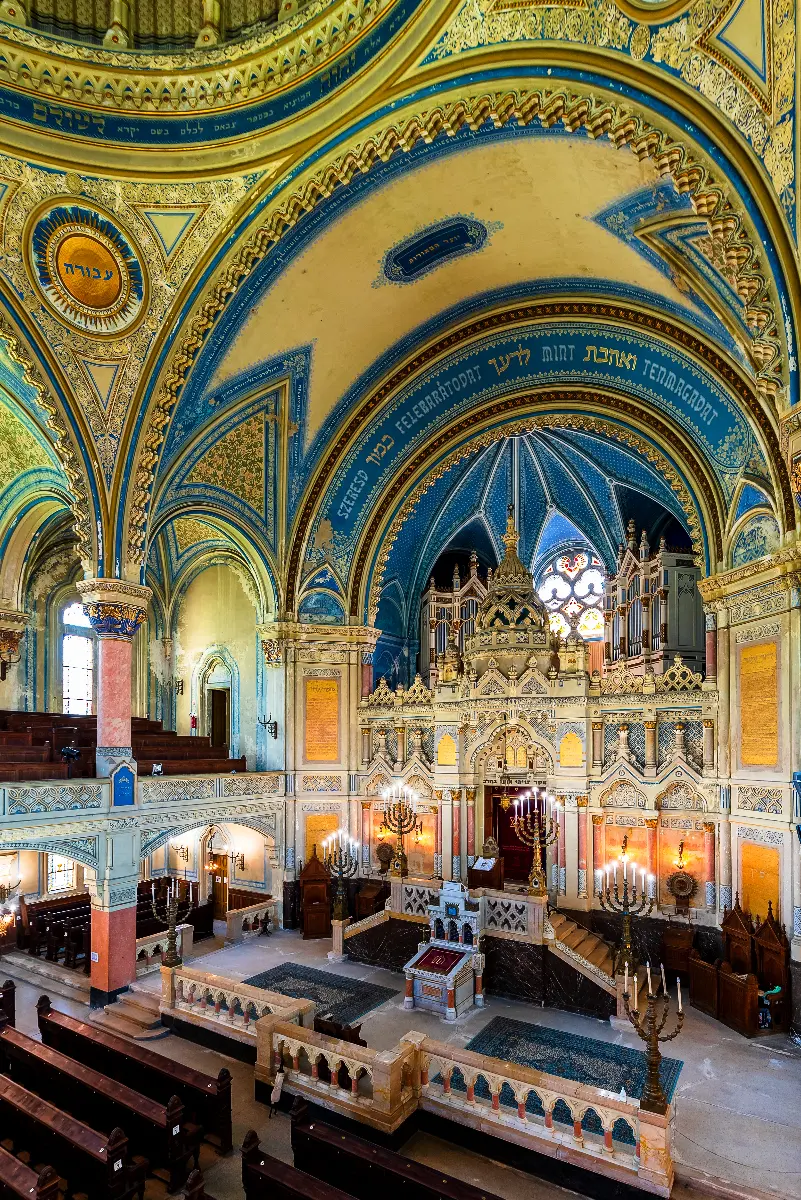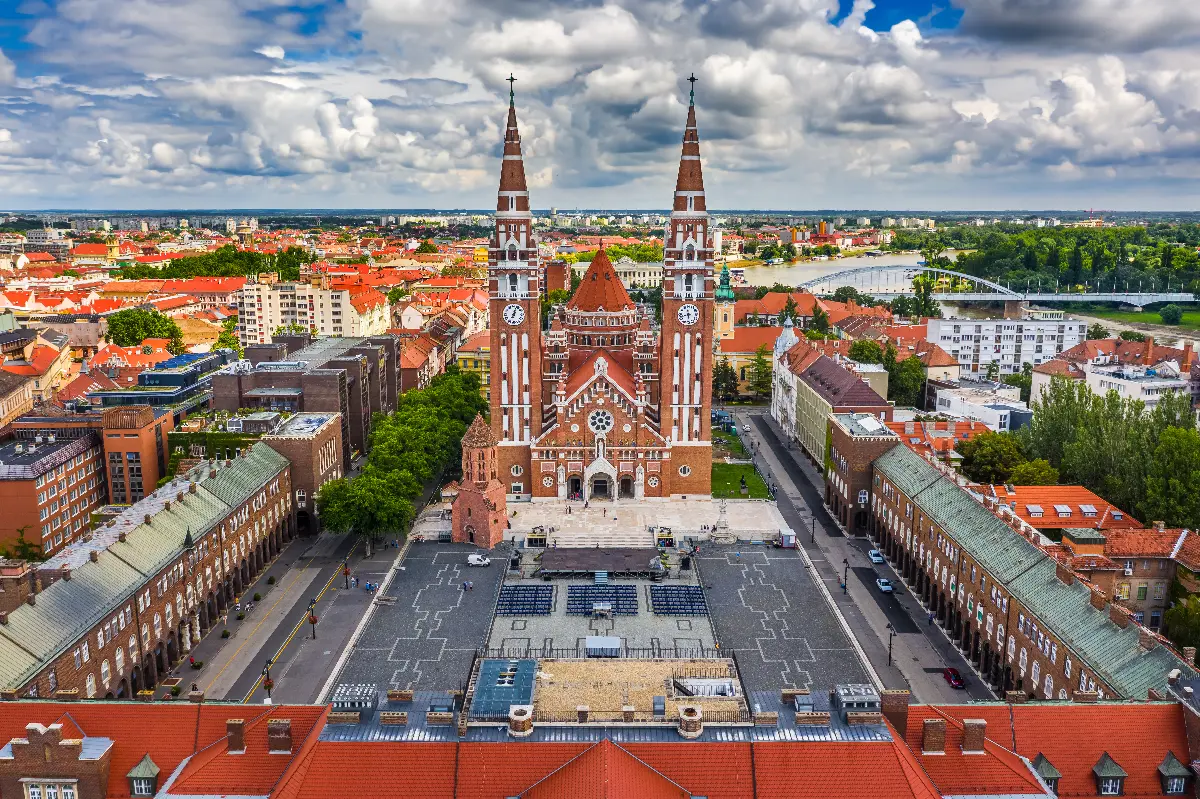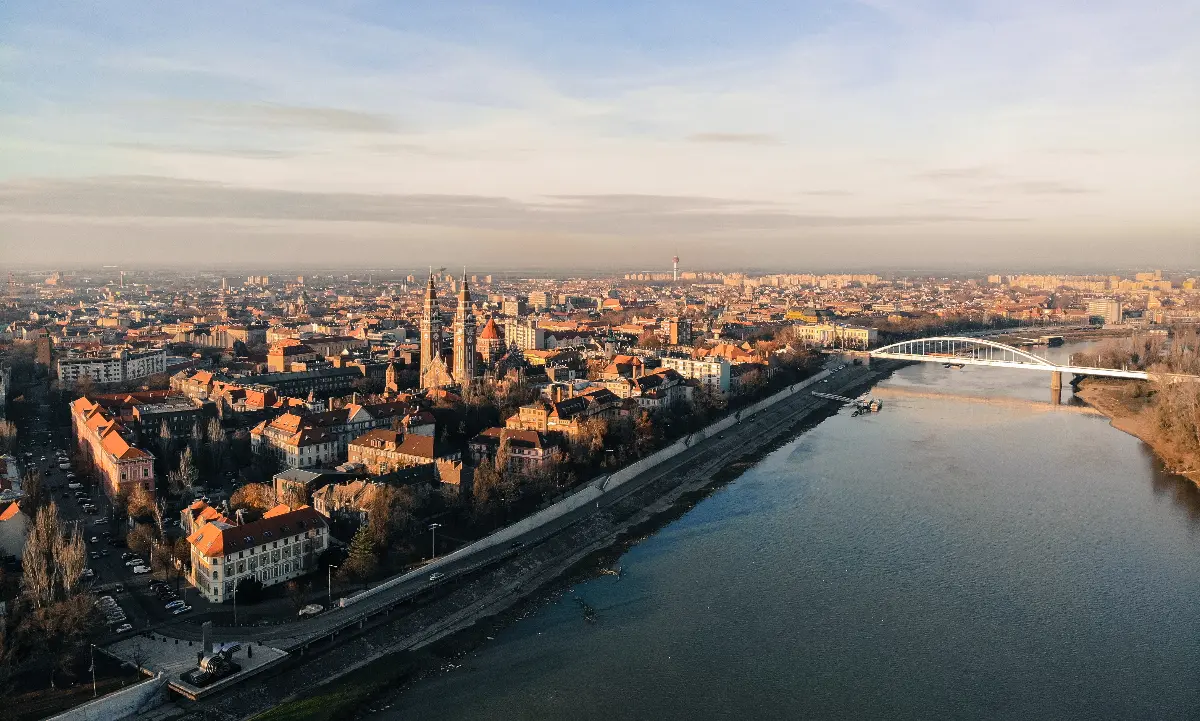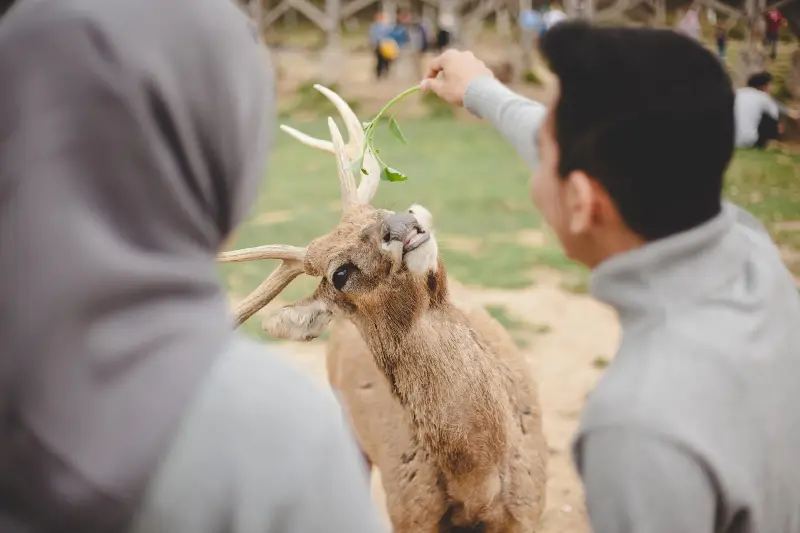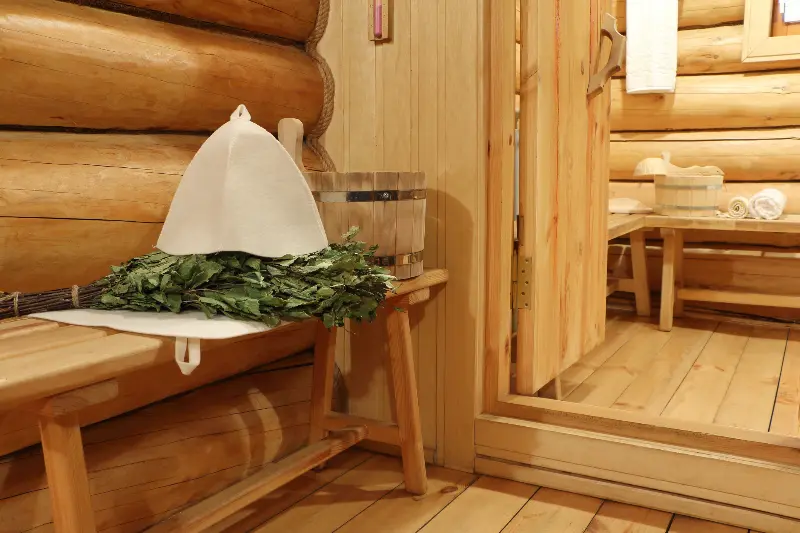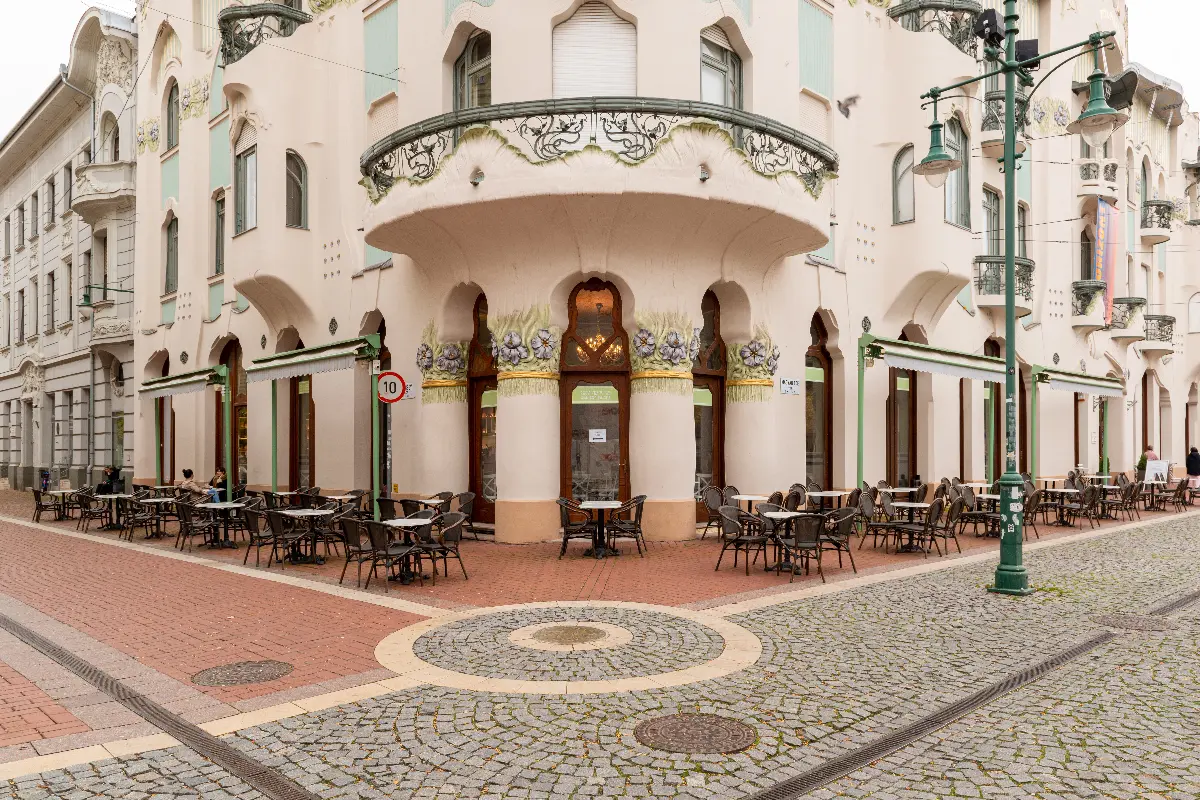
Helyszín címkék:
Travelling by “tuja” in Szeged: daytime adventures downtown
Jászberényi Attila
When we have passed the beer universe, we shouldn’t go along the amazingly renovated Oskola street, turning into ‘Oroszlán’ (Lion) street, we can experience the stepping stone of a perfect day in Szeged, drinking wine from the southern territories in the frame of a street bar.
Mediterra Wine Bar southern territories wine shop and tasting place
Besides the career of burek and cevap in Szeged, Damir Holoker’s story illustrates the close, meandering, and inspirational relationship between Szeged and the southern world in the best way. He was born in Vukovár, and was originally a mechanical engineer, then a radio astrologer in Novi Sad. Damir could not graduate from the University of Tree Fruit and Viticulture due to evading the draft and desertion, but in ‘93 he arrived in the city with a strong knowledge of Hungarian, a total of two words (black, striped). As a natural next step in his career, he soon launched a picture-framing workshop, then the first organic wine shop in the country. He is going to open a Croatian wine shop influenced by the experiences of Croatian EU accession and certain childhood memories. Has anyone ever heard of the wine region of Szerémség? What about the Gora (Tarcal) hill rising at the Gáspár pharmacy? How about one the best traminis in the world of which 11,000 bottles were taken to the coronation of Queen Elisabeth? After the accession on the first of July in 2012, the first wine transport arrived on the 5th. The tramini came from the winery in Újlak (Ilocki Podrumi) which has been producing it continuously for the longest time in the world and its scent filled Damir’s house and childhood. The tiny salon is filled with the same aroma now. Acacia, elderberry, linden, orchid, freesia, jasmine in the nose and on the palate. Damir says, its his genetic code. After deciding to sell tramini in Hungary, other bottles appeared. For example, Postup from the Peljesac Peninsula with the nose of indescribable sea and fishing ports associating with salted sardine, and many more items mainly from organic wineries. The tiny shop is packed with excellent wines, handmade shelves, design, retro furniture, joy and atmosphere. Damir is an enthusiastic organiser of wine dinners and a wine missionary. He is a soft-spoken, but impulsive man with a wide experience of life. We also listened eagerly to every word of his while we were drinking his excellent wines. Then on one of the cosiest terraces in the city we had a great time in Rudi and Fickó’s workshop, which produces delicacies.
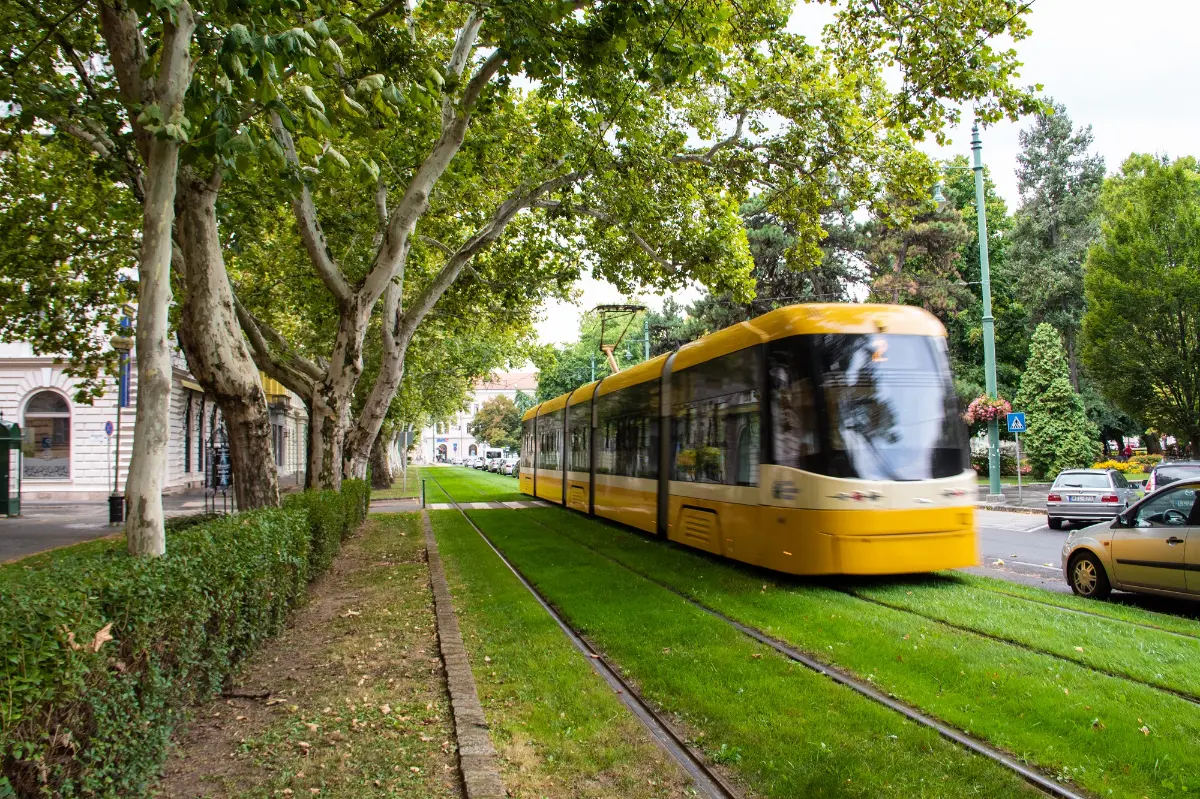
From here we approach the heart chakra of the city, Kárász Street. A trendy vegan place called ‘Zöldlevelecske’ (Tiny green leaf) competes in colour harmony with a very small café of new wave called ‘Kék Elefánt’ (Blue Elephant) which hides in the yard. On the pedestrianised street the uniform places with their uniform terraces are crowded mostly with youths, dropping in to the closed section, we may be surprised to find ourselves in a cafe, rather than the reading room of the university library, given the proportion of laptops and books per capita. There aren't many commercial premises anymore, but one man persists.
‘Tiszavirág’ (Mayfly) hotel and café
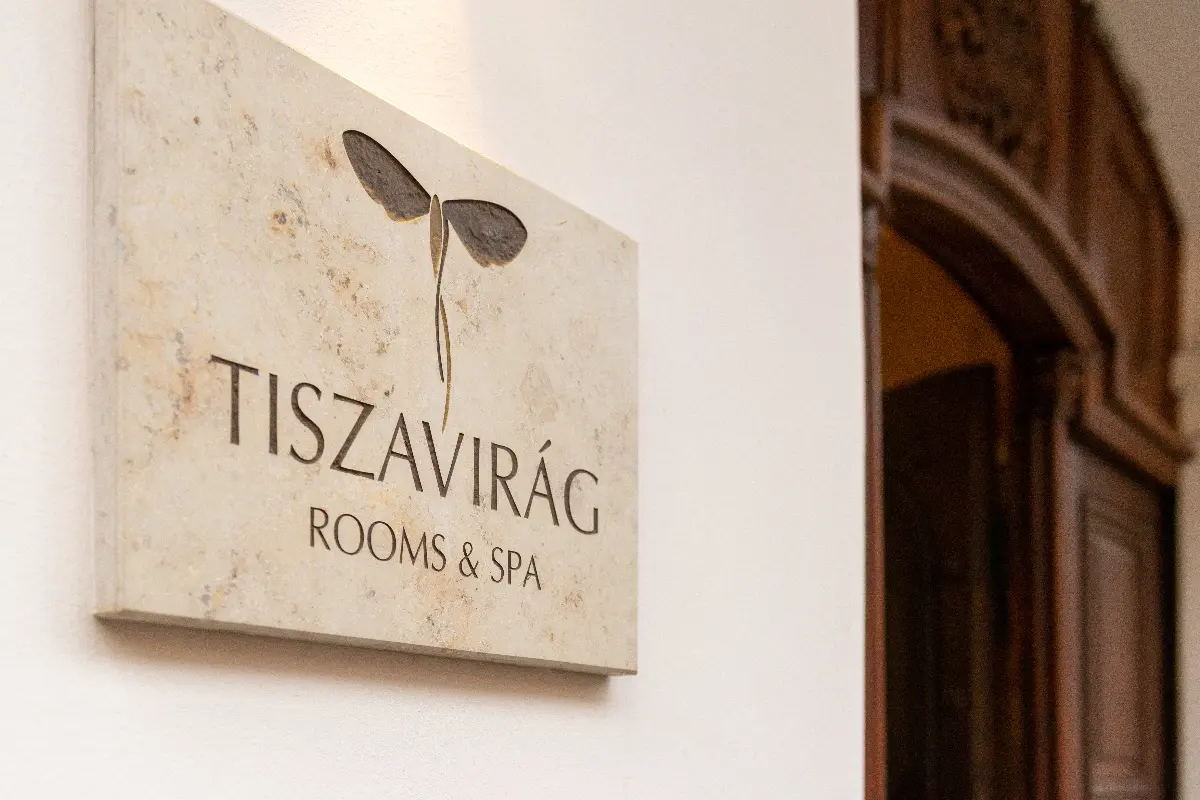
Two years ago, before the change of ownership, it was the peak of the Szegedi ‘éttermiség’ (the combination of the words restaurant and intellectual, inntellectual), but its adventurous history has survived. A merchant, a rabbi lived here, but the place also worked as a pub, a brothel, and a workshop. The property was formerly declared to be dangerous to human life, now it has been transformed into an architectural masterpiece in the middle of a former Jewish quarter, an exciting jewel box that preserves all the spirit of the place. The façade is a classic conservation reconstruction, but every square inch of the interior is a unique, creative, special and consistent implementation. The patio surrounded by metal and glass is a contrasty and unconventional garden, the 12 rooms of the hotel are the textbook examples of eclectic. The furnishings seemed to have come together over several generations. In the salon, a shoemaker’s chair refers to the shoemaker, in the café, the wooden heads refer to the millinery, and the glass-walled bathrooms in some rooms refer to the former Moulin Rouge in its own spicy way.
Please note that this place has been temporarily closed in 2022 autumn.
Eldorado colonial and exotic trade
180 m2, two floors, tens of thousands of goods, clothes, incense sticks, jewellery, all kinds of accessories, bean bags, furniture, hookahs, authentic sellers, tattoos, dreadlocks, batik suits, the atmosphere of Woodstock, Bangkok and bazaar. Ágnes Farkas and Imre Jenei are of the same ilk. Ágnes came here to study, but Imre is a native of Szeged. They are over fifty, but their appearance, style, and way of thinking seem ageless. They fell in love at the university, Ágnes studied biology and chemistry, Imre was a mechanic and plumber. After the change of regime, they went travelling, gaining experience of hippie shops in Western Europe, then in Asia. At that time Imre established the routine import of goods, and soon realized the opportunity; the rover’s life became business. They visit Thailand, Nepal, India, Indonesia, China at least five times a year - they’ve learned what to get from where, they buy goods only from a small number of partners, so a system of homely, friendly relationships has been built. They soon had 15 shops (franchise, their own), even the flagship in Kárász street is more than 15 years old. A cultural mission, a fashion theatre, happenings, then a world crisis and a plaza terror, but Kárász Street is still one of the largest colonial gift shops in Hungary. A quarter of a century has passed and many things have changed. The former mystery has consolidated, some of the contemporary young customers now come with their grandchildren. The “style of Eldorado” has become a brand. A recurring phrase on auction pages is “Eldorado dress for sale,” a brand can hardly achieve more than that.
REÖK Palace

The biggest and newest attraction in Szeged is the astonishingly eclectic REÖK Palace, with permanent cultural productions and Art Nouveau café which is a great hit. Even the biggest question has been solved, how should we pronounce its name? As the place is not named after the imaginary botanist and local poet Gusztáv Reök who might come to mind first, but is the abbreviation of the less romantic ‘Regionális Összművészeti Központ’ (Regional Art Centre). In any case, based on the fleeting poll, we can safely say rökk /rək/ palace as the locals do, and let’s not try to decipher the r-e-ö.

